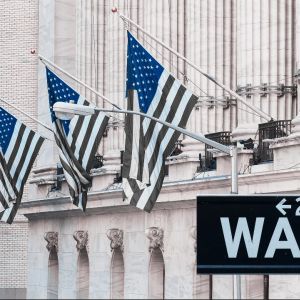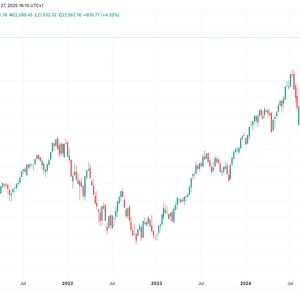Wall Street is quietly betting big on stablecoins, not as a crypto side hustle but as a full-blown replacement for bank wires and card networks. Today, Circle, which went public on the New York Stock Exchange earlier this month, saw its shares jump almost 8%, recovering from a brief dip. The stock has now surged over 600% since its IPO. That price action is coming at a time when big financial firms are laying new tracks to run global payments through stablecoins instead of traditional banks. The excitement around Circle didn’t happen in a vacuum. Bitcoin and ether have both been climbing this week, pushed higher by hopes of lower interest rates, a calmer stance from President Trump’s White House on tariffs, and a temporary breather in Middle East conflicts. But for investors chasing Circle and the stablecoin market, it’s not just about riding the crypto wave. It’s about ripping out the old money pipes and laying down a whole new system. Fiserv and Mastercard start connecting stablecoins to payments rails According to CNBC, Fiserv, a payments company with deep ties in banking, released a stablecoin earlier this week. Almost immediately after, Mastercard linked that coin into its existing payments network. It’s one of the clearest signs yet that old-school finance is loading up the backend for what they see as a trillion-dollar opportunity. Zach Abrams, the co-founder and CEO of Bridge, told CNBC’s MacKenzie Sigalos on Thursday’s “Crypto World” that stablecoins could grow into the trillions, calling them “an entirely new money-movement platform, like credit cards were decades ago.” He added, “Credit cards created trillions in value, and I think stablecoins will be the same.” Abrams says this transformation will unfold over years, not months, but it’s already happening behind the curtain. His company, Bridge, which just got bought by Stripe in a $1.1 billion deal, is already powering real transactions. ScaleAI, which recently received a $14 billion investment from Meta, uses Bridge to pay its global network of data labelers. SpaceX is also using Bridge to collect payments from Starlink customers in local currencies and convert them back to U.S. dollars. These are real-use cases, not test pilots. Traditional banks want in before the trillions show up Today, the $400 billion stablecoin market is controlled mostly by Tether and Circle, but that’s not the ceiling. Abrams said most major banks expect the market to reach a few trillion. That’s why he believes traditional players like JPMorgan Chase, Bank of America, and Fiserv will need to take a piece of the traffic. “It won’t get to a few trillion without a huge percentage being handled by traditional financial institutions,” Abrams said. What this means is clear: the banks that helped build the old system are now racing to rewire it before it’s fully out of their hands. And the tools they’re using are stablecoins, not wires, not ACH, not SWIFT. Meanwhile, Wall Street’s push into tokenization keeps expanding. Republic, an investment startup based in New York, announced this week that it will let users buy digital tokens representing shares in private companies like SpaceX, OpenAI, and Anthropic. The price of entry? Just $50. That’s a massive drop from the usual $10,000 minimum required for investing in these kinds of deals. It’s the kind of retail-access play that shows how far tokenization has already gone, and how much more Wall Street thinks it can extract from packaging real-world assets into tradable tokens. Cryptopolitan Academy: Coming Soon - A New Way to Earn Passive Income with DeFi in 2025. Learn More


















